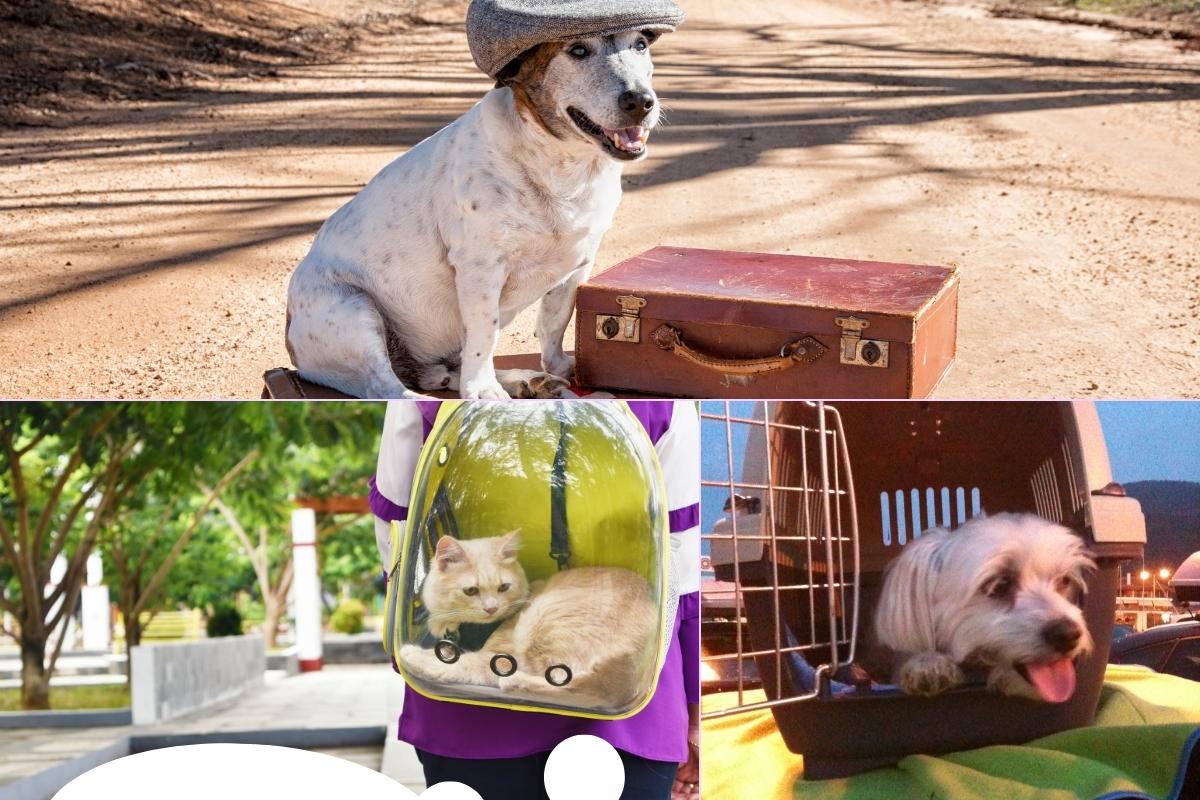Living As A Digital Nomad with a Pet
While having an animal adds complications to the nomadic way of life, it also brings a lot of joy and companionship to a lifestyle that is, at times, lonely and isolating.
Depending on where you’re traveling and what kind of animal you adopt, the complications and logistical hurdles you face in bringing an animal on your adventures will vary widely.
In this article, we’ll cover common questions digital nomads have about living and traveling with a pet and give an overview of how different pets adapt to the nomadic lifestyle.
Can you cross international borders with a pet?
This is one of the stickiest issues for digital nomads trying to travel with an animal; international regulations on what animals can and can’t enter a country, and what paperwork they need, can be very strict.
If you have a reptile or amphibian pet, they may not be allowed in the country at all; dogs and cats will likely need special visas, a health check, and possibly (although rarely) a quarantine period.
This doesn’t mean your pet can’t travel around the world with you, but it does mean you’ll need to be prepared to do a lot of paperwork to make that happen.
Even in the United States, even domestic nomads can run into this issue. Hawaii, in particular, is very strict about animals crossing its borders, in order to protect its fragile ecosystem. Plus, certain pets, like red-eared slider turtles, may be legal to own in some states but restricted or even fully banned in others. Always research any new jurisdiction you’re moving to for their pet-owning regulations, from nationwide bans to town ordinances regarding licensing and vaccination requirements.

Can you take pets on planes?
It’s unlikely that anyone reading this article is unaware of the many controversies in the last decade around bringing emotional support animals and other pets on planes, and those scuffles should give you a fairly good idea of the answer to this question: Yes, with restrictions.
Almost any animal can fly in the unheated cargo hold. Talk to your vet about whether this is a safe option for your pet, and consult the airline you intend to use about their policies for safeguarding animal welfare in transit.
If you want to take your pet with you in the cabin, things get a little bit more complicated for animals that aren’t small dogs and cats. In the US, the Federal Aviation Administration requires your pet to have a small container, like a carrier or travel tank, that is stowed under a seat, and that you follow any flight attendant instructions about stowing the container.
In addition, airlines are allowed to institute their own regulations, like requiring a pet to be odorless or harmless; needing to see a health certificate or vaccination record; or even banning pets from the passenger cabin entirely.
The only way you can guarantee your pet will be allowed in the passenger cabin is if they are registered as a service animal that is trained to assist you with a disability.
Emotional support animals are not considered service animals in this context. Remember that these are only the regulations in the United States. Different countries will have different requirements for and limits on flying with pets, and you should consult the airline regulatory body in any country you are flying to, from, or through, as well as individual airline’s animal policies, before booking any flights with your pet.

Which pets are best for a nomadic lifestyle?
Obviously, which pets are best for any lifestyle will depend on your specific situation and personal preferences.
Any animal you choose will also come with their own potential complications and challenges. However, some animals will clearly adapt to a nomadic lifestyle better than others.
Reptiles and amphibians that can live in a small tank or terrarium are a great option because of how easily they adapt to new living spaces. No matter what your living arrangements are, you can find space for a 10-gallon tank for a pygmy chameleon or desert rain frog. Because their environment will stay the same, even frequent moves will not be particularly traumatic for these animals, and they will also be easier to transport in a small travel tank or cage.
Some birds make great travelers, while others are easily stressed by traveling and frequent changes to their routines. They also have many of the same advantages as reptiles and amphibians in terms of being easy to transport and adapting well to new spaces because of their contained environments.
Cats are creatures of habit, and traveling and adapting to a new household can be difficult for them unless they’re trained from the very beginning. Some places are also considering or have already enacted regulations that don’t allow cats outside because of their negative effect on native birds and other animals.
How well your dog will travel and adapt to a new place will depend a lot on its breed and individual disposition. For logistical reasons, most nomads will probably do better with a small dog. Keep in mind that owning a dog may make it more difficult to find housing that allows them.
It’s hard to make generalizations about nomads keeping pets because there are such a wide variety of animals out there, and each individual pet and person is different. It also makes it fairly easy to say that there is a perfect pet out there for every digital nomad if they’re interested in keeping one.

Post written by Nigel. Nigel Rober is a lifelong reptile lover, biologist and occasional digital nomad of More Reptiles.







